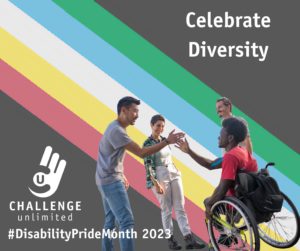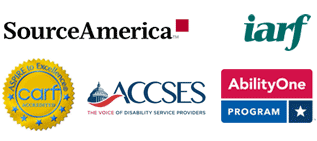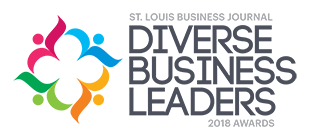The Pathway to Meaningful Work for All Abilities Starts Here!
What is Disability Pride Month and What does the Flag Symbolize?
Celebrating Disability Pride Month: Embracing Diversity and Empowerment

The History of Disability Pride Month
The origins of Disability Pride Month can be traced back to the passage of the Americans with Disabilities Act (ADA) in 1990. This landmark legislation was a turning point in the fight for civil rights for individuals with disabilities in the United States. The ADA ensured equal opportunities in employment, public services, transportation, and other aspects of daily life, breaking down barriers that had previously excluded people with disabilities. Observed annually in July, it is a powerful celebration that honors and empowers people with disabilities. It is a time to reflect on the historical struggle for disability rights, recognize the achievements of disability activists, and promote a world that values inclusivity and accessibility. In this blog post, we will explore the history, significance, and the symbol of unity – the Disability Pride Flag.
The first Disability Pride march was held in Boston in 1990, just a few months after the ADA was passed. The march was organized by Judith Heumann, a disability rights activist who is known as the “Mother of the ADA.” The march was a way to celebrate the passage of the ADA and to raise awareness of the ongoing fight for disability rights.
Meaning of the Celebration
Disability Pride Month is a time to celebrate the diversity of the disability community and to promote the message of inclusion and acceptance. It is also a time to remember the struggles that people with disabilities have faced throughout history and to continue to fight for equality.
This month serves as an opportunity to:
- Raise Awareness: Disability Pride Month provides a platform to educate the public about disability rights, challenges, and achievements. By increasing awareness, we can combat misconceptions and promote empathy and understanding.
- Celebrate Diversity: Just as every individual is unique, so are their experiences with disability. Disability Pride Month encourages people to celebrate the diversity within the disability community and recognize the vast array of talents, skills, and perspectives that individuals with disabilities bring to society.
- Advocate for Change: Disability Pride Month is a call to action. It reminds us that there is still work to be done to create a more accessible and inclusive world. It encourages governments, organizations, and communities to implement policies and practices that promote equality and accessibility.
The Flag & Its Symbolism
The Disability Pride Flag was created in 2019 by Ann Magill, a writer and disability rights activist. The flag features five diagonal stripes of different colors on a black background. The colors and the black background have the following meanings:
- Red: Physical disabilities
- Gold: Neurodiversity
- White: Invisible and undiagnosed disabilities
- Blue: Emotional and psychiatric disabilities
- Green: Sensory disabilities
- Black: Anger and mourning over the eugenics and the neglect that disabled people have to fight against.
The diagonal stripes represent cutting across barriers that separate people with disabilities from society. The black background represents the anger and mourning over eugenics and the neglect that disabled people have to fight against. The colors of the flag were chosen to be as inclusive as possible, representing a wide range of disabilities.
The Disability Pride Flag is a symbol of hope, empowerment, and pride for people with disabilities. It is a reminder that people with disabilities are not to be pitied or feared, but rather celebrated for their unique contributions to society.
Here are some additional details about the meaning of the colors on the Disability Pride Flag:
- Red: The color red is often associated with physical disabilities, such as mobility impairments, visual impairments, and hearing impairments.
- Gold: The color gold is often associated with neurodiversity, which refers to the range of cognitive functions and behaviors that fall outside the typical range. People with neurodiversity may have conditions such as autism, ADHD, or dyslexia.
- White: The color white is often associated with invisible and undiagnosed disabilities, such as chronic pain, fatigue, and mental health conditions.
- Blue: The color blue is often associated with emotional and psychiatric disabilities, such as anxiety, depression, and bipolar disorder.
- Green: The color green is often associated with sensory disabilities, such as deafness, blindness, and lack of smell.
How to Celebrate Disability Pride Month
There are many ways to celebrate Disability Pride Month. Here are a few ideas:
- Attend a Disability Pride event in your community. Here’s a link to one being hosted by the Missouri Historical Society in St. Louis.
- Learn about the history of the disability rights movement.
- Talk to someone you know who has a disability about their experiences.
- Challenge stereotypes about people with disabilities.
- Advocate for disability rights in your workplace or school.
Disability Pride Month is a time to celebrate the diversity of the disability community and to promote the message of inclusion and acceptance. It is also a time to remember the struggles that people with disabilities have faced throughout history and to continue to fight for equality.
Our Marketing Manager was recently invited to The Big Z for an interview, she was joined by CU Vice President of Programs, John Becker. They discussed #DisabilityPrideMonth, what it means at Challenge Unlimited, how we can support individuals with disabilities and raise awareness of the celebration in our community. Listen Below.
#DisabilityPrideMonth #DisabilityRights #PRIDE #disability #advocacy #awareness #WBGZ #AdvantageNews

